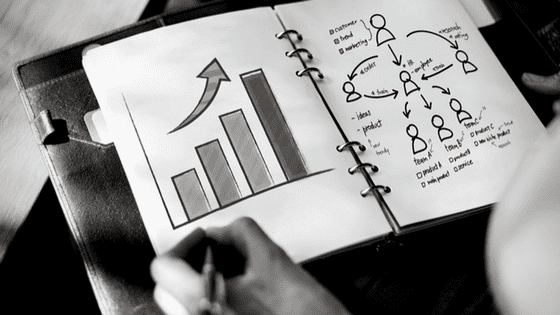There’s an illusion that small businesses simply don’t face risks like big businesses do. It’s easy to underestimate the ‘what ifs’ – especially when you’re busy making money and attending to the daily duties of running things. When things are running smoothly, they’re great. But whether or not we like to admit it, every business owner is faced with potential threats that can leave our hard work very vulnerable.

When disaster strikes, business operations come to a halt which can leave the doors closed for good. According to Nationwide’s annual survey, 25% of small and medium-sized businesses never reopen after being impacted by a catastrophe. A Business Continuity Plan (BCP) is a practical plan of attack to assist in keeping your business operating in the event of an emergency. And a well devised BCP can be all the difference between coping with the disaster and going bust. Here’s what you need to know:
Analyse Potential Risks and Threats
Business continuity planning encourages you to analyse the potential risks and threats your small business faces. Remember, smart entrepreneurs have a healthy fear of the unknown and use it as a motivator to take action. Pinpoint what might happen and what solution fits best for each threat, so business can continue as usual.
By planning for each risk, you and your staff will less likely be running around in circles should something go wrong. From a power outage that sees all your valuable data become lost or sabotaged, a natural disaster or cyber-attack which destroys network and hardware components, or an accident influencing personnel, there are multiple risks that affect any business – regardless of its size.
Tip: Through a thorough risk analysis, you’ll also be able to identify critical assets. Prioritise the items that are vital to the lifeblood of your business.
Determine Recovery Strategies
Planning how you will recover from a potential risk or threat is just as crucial as the solutions you put forward. These strategies, combined with an action plan, must be built into a set of procedures to encourage clear communication. This ensures everyone is on the same page for every risk associated with the business.
Determine a suggested recovery plan from the potential disaster. This will guide you and other staff on what to do after disaster strikes and how to move your business forward into regular operations again. Maintaining a consistent level of communication is paramount through these stages, especially if there has been a data breach and information needs to be clarified with customers and/or business partners. A BCP will have the required procedures in place to help you get back on track as quickly and as efficiently as possible.
Tip: Create a communications strategy to go with these procedures. This will be helpful in minimising damage to your brand’s reputation and/or loss of customers. Utilise as many channels as possible so key people are kept in the loop. Updates can be posted on social media or via direct phone calls and emails. Make sure you have a backup plan if regular communication channels are down.
Put a Contingency Team in Place
Business continuity plans must include contact details of an emergency response team. This information may include relevant staff members, building maintenance or office real estate and local emergency services. Business continuity planning encourages you to assign staff members to complete certain tasks if disaster does strike. Make sure these people are trained in advance to act on the policies put forward.
Tip: Keep contact details of major clients, contractors and suppliers too. Having insurance details for quick reference is also handy.
Embrace New Technology
Because a BCP enables you to devise a recovery plan for your business and IT infrastructure following a disaster, it can be a good time to embrace new technologies to benefit from. Loss of data, whether by natural or man-made disasters, can be catastrophic. But some technologies may be able to help minimise the damage.
Cloud technology is a prime example of this. Whilst it’s fantastic for small business efficiency and budgeting strategies, it’s also great for disaster recovery. Data should be backed up at regular intervals, regardless of whether it’s in the cloud or not, but having multiple backups for sensitive or valuable information needed to operate your business is essential.
Small business owners that recognise the risks for their business early have a competitive advantage over others. Business continuity planning forces you to review the best practices for these threats and helps you to minimise its impact and costs, be prepared and fill potential gaps in your insurance policy. Don’t forget, an effective BCP should be reviewed annually to keep everything up to date.






















